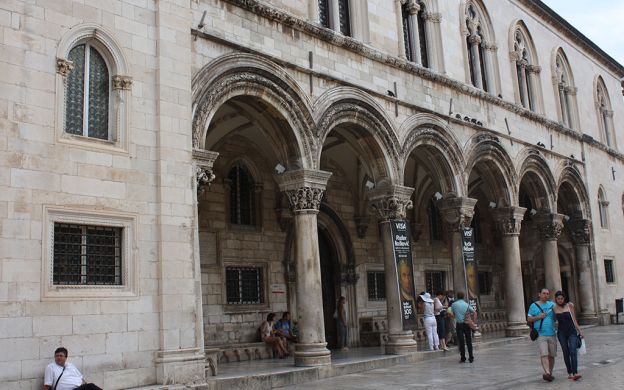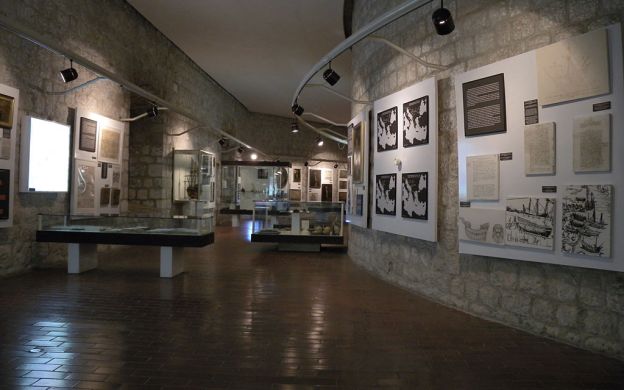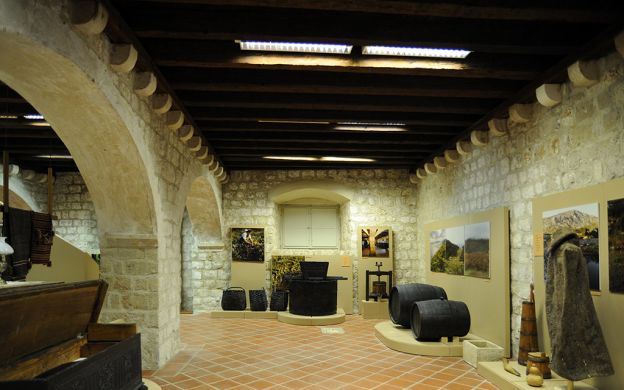-

-

-

-

- +2 More Images
This Christmas, Save More!
Use XMAS2025 to get upto 10% off
Dubrovnik Museums Private Tour
Activity Schedule
Key Highlights
- Marvel at the architecture and artefacts housed in the museums
- An expert guide will accompany you at all times
- A private tour ensures an intimate experience and maximum interaction with the guide
Overview
The capitals were carved in Renaissance style by Pietro di Martino of Milan, whose capital with Aesculapius has been preserved on the right half-column of the portico. The second gunpowder explosion in 1463 destroyed the western facade of the Palace, and the two famous architects Juraj Dalmatinac and Michelozzo of Florence were engaged in the reconstruction for a short period.
Although the design of Michelozzo was unfortunately rejected, his influence in the restoration of the facade and portico, mainly in Renaissance style, can not be denied. After the earthquake of 1667 the atrium was partially reconstructed with an impressive Baroque staircase. During his one-month mandate the Rector of Dubrovnik lived in the Palace, which also housed the Minor and Major Council hall, the Rectors residence, the courtroom, administration office, prisons, an arsenal and gunpowder store-house. From the Rectors Palace one could enter the Great Council Palace.
MARITIME MUSEUM: The exhibits on the First Floor give an overview of the development of Dubrovnik maritime trade and shipbuilding from its very start to the fall of the Dubrovnik Republic. The exhibits on the Second Floor show the resurgence of maritime trade in Dubrovnik and on the Pelješac Peninsula during the 19th century, as well as the strength of Dubrovnik steamships up until World War II and afterwards. THE RUPE MUSEUM: where it is possible to see just how much attention the residents of Dubrovnik gave to the storage of grain.The Dubrovnik Republic kept all the state reserves of wheat, barley and millet in deep silos called Rupe, carved out of stone and coated with a water-proof material that kept the grain at a temperature of 17?C.
ETHOGRAPHIC MUSEUM: The Ethnographic Museum is located in an old granary dating to the 16th century,... where it is possible to see just how much attention the residents of Dubrovnik gave to the storage of grain.The Dubrovnik Republic kept all the state reserves of wheat, barley and millet in deep silos called Rupe, carved out of stone and coated with a water-proof material that kept the grain at a temperature of 17?C.
The traditional rural economy and architecture of the Dubrovnik region is found on the First Floor. Folk costumes and textile handiwork can be seen on the 2nd Floor.
DUBROVNIK NATURAL SCIENCE MUSEUM: The beginnings of natural science activity in Dubrovnik go back to 1872,...when the Dubrovnik Museo Patrio was founded.
In addition to the Chamber of Trade and Crafts Collection, the museum was founded on the private natural science collection of the apothecary and ship-owner Antun Drobac. Exhibits at the Dubrovnik Natural Science Museum include part of the Museum collection from the very beginnings of the Museum in the late 19th century, thus reviving the Natural Science Office of the time.
Inclusions & Exclusions
Inclusions
- Entrance to museums
- Expert guide
Exclusions
- Hotel transfers
- Meals
- Gratuities
Please note
Please call the activity operator at least 24 hours prior to start of the tour to confirm departure details.
Voucher information: You must print and surrender a paper version of your booking voucher for this activity (showing your voucher on a smartphone is not accepted). No refund can be given for customers without a printed copy of their voucher.
Additional info
Things to do in Dubrovnik
Cities Near Dubrovnik
Travel Inspiration
-
 CultureWelcome to Dubrovnik the awe-inspiring Croatian City: Best Things to Do
CultureWelcome to Dubrovnik the awe-inspiring Croatian City: Best Things to DoThe walled city that refuses to be defeated The post Welcome to Dubrovnik the awe-inspiring Croatian City: Best Things to Do appeared first on The Guidebook - isango!.
Read more ➟ -
 Inspiration10 Iconic Game Of Thrones Filming Locations You Can’t Miss!
Inspiration10 Iconic Game Of Thrones Filming Locations You Can’t Miss!How many have you ticked off? The post 10 Iconic Game Of Thrones Filming Locations You Can’t Miss! appeared first on The Guidebook - isango!.
Read more ➟ -
 In The LimelightVisiting Rome for the First Time? Do’s and Don’ts You Can’t Ignore
In The LimelightVisiting Rome for the First Time? Do’s and Don’ts You Can’t Ignore“Rome is not like any other city. It’s a big museum, a living room that shall be crossed one one’s tiptoes.” –… The post Visiting Rome for the First Time? Do’s and Don’ts You Can’t Ignore appeared first on The Guidebook - isango!.
Read more ➟

